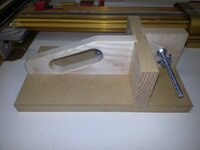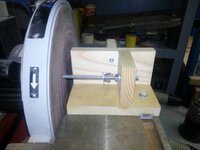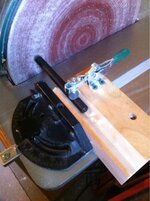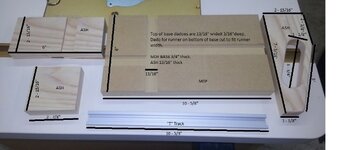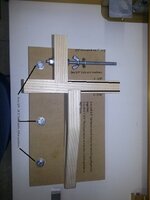Mike D
Member
This is my version of a squaring jig. It's made from MDF for the base, scrap pieces of ASH for the handle and support pieces, 1/4" threaded rod, "T" track and common hardware. If you folks are interested I can add a material list with measurements in the library. It's quite easily built and it works very well. Thanks for viewing and all comments, questions are welcome.

